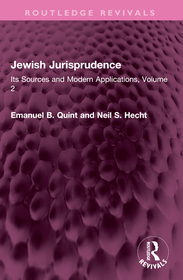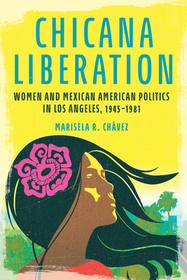
Literary and Artistic Japan behind the Iron Curtain
Sorozatcím: Routledge Contemporary Japan Series;
-
10% KEDVEZMÉNY?
- A kedvezmény csak az 'Értesítés a kedvenc témákról' hírlevelünk címzettjeinek rendeléseire érvényes.
- Kiadói listaár GBP 145.00
-
69 273 Ft (65 975 Ft + 5% áfa)
Az ár azért becsült, mert a rendelés pillanatában nem lehet pontosan tudni, hogy a beérkezéskor milyen lesz a forint árfolyama az adott termék eredeti devizájához képest. Ha a forint romlana, kissé többet, ha javulna, kissé kevesebbet kell majd fizetnie.
- Kedvezmény(ek) 10% (cc. 6 927 Ft off)
- Kedvezményes ár 62 346 Ft (59 378 Ft + 5% áfa)
Iratkozzon fel most és részesüljön kedvezőbb árainkból!
Feliratkozom
69 273 Ft

Beszerezhetőség
Becsült beszerzési idő: A Prosperónál jelenleg nincsen raktáron, de a kiadónál igen. Beszerzés kb. 3-5 hét..
A Prosperónál jelenleg nincsen raktáron.
Why don't you give exact delivery time?
A beszerzés időigényét az eddigi tapasztalatokra alapozva adjuk meg. Azért becsült, mert a terméket külföldről hozzuk be, így a kiadó kiszolgálásának pillanatnyi gyorsaságától is függ. A megadottnál gyorsabb és lassabb szállítás is elképzelhető, de mindent megteszünk, hogy Ön a lehető leghamarabb jusson hozzá a termékhez.
A termék adatai:
- Kiadás sorszáma 1
- Kiadó Routledge
- Megjelenés dátuma 2025. szeptember 30.
- ISBN 9781041019275
- Kötéstípus Keménykötés
- Terjedelem252 oldal
- Méret 234x156 mm
- Súly 630 g
- Nyelv angol
- Illusztrációk 28 Illustrations, black & white; 28 Halftones, black & white; 3 Tables, black & white 700
Kategóriák
Rövid leírás:
This book examines the public perception, scholarly reception, and critical analysis of Japan through translations of its literature and artistic endeavours within the temporal frame and geopolitical confines of the countries that were either occupied or left under the influence of the Soviet Union after World War II.
TöbbHosszú leírás:
This book examines the public perception, scholarly reception, and critical analysis of Japan through translations of its literature and artistic endeavors within the temporal frame and geopolitical confines of the countries that were either occupied or left under the influence of the Soviet Union after World War II.
By engaging with literary translations from Japanese into languages such as Romanian, Russian, Czech, Hungarian, German, and Slovenian, alongside art exhibits and performance shows focused on Japan, this book provides an original contribution to the field of Japanese studies in Eastern and Central Europe and the former Soviet space. In addition, by offering a multifaceted, multilingual, and multicultural approach to the diverse realities of countries from the former communist bloc, the book sheds light on the unique relationships they created with literary and artistic Japan, as well as the unique ways in which they attempted to lift the Iron Curtain and gaze at the Asian Other, a subject of both fascination and identification.
Approaching the subject of Japanese culture through the unique lens of former communist bloc nations, this book will appeal to students and scholars of Japanese studies and Japanese literature, particularly in the context of translations.
TöbbTartalomjegyzék:
Introduction. Forbidden Space(s): “Japan” in the Constructed Realm behind the Iron Curtain Part I: The Concrete and the Conceptual: Reception of Japan 1. Shifting Imagery on the Covers of Clavell’s Shōgun and the Romanian Reception of Japanese Visual Culture 2. The “Rediscovery” of Japan in Hungary in the 1950s-1960s 3. The Reception of Modern Japanese Literature in the German Democratic Republic: A Survey 4. Directions in the Slovene Translation of Japanese Literature during the Postwar Years 5. The Hungarian Reception of The Hiroshima Panels and the Communist Desideratum for World Peace 6. The Return to the Myth: Japanese Literature in Soviet Moldova Part II:The Imagined: Japan as Symbol of Resistance 7. After the Freeze and the Thaw: Kawabata Yasunari’s Nobel Prize and the Soviet Rediscovery of Japan 8. Rays behind the Iron Curtain: Japan, Cinema, and Bulgarian Socialist Culture 9. Two Japanese Theater Classics in the Shadow of Socialist Realism in Hungary 10. Sōsaku-hanga and ‘Progressive Japanese Art’ in Soviet Art History from the Late 1950s to the mid-1970s 11. Japanese Poetic Expression against Communist Oppression: The Haiku/ Senryū of Dissident Karel Trinkewitz and Others 12. The Reception of Clavell’s Shōgun: Fantasizing about Japan in Communist Romania
Több







